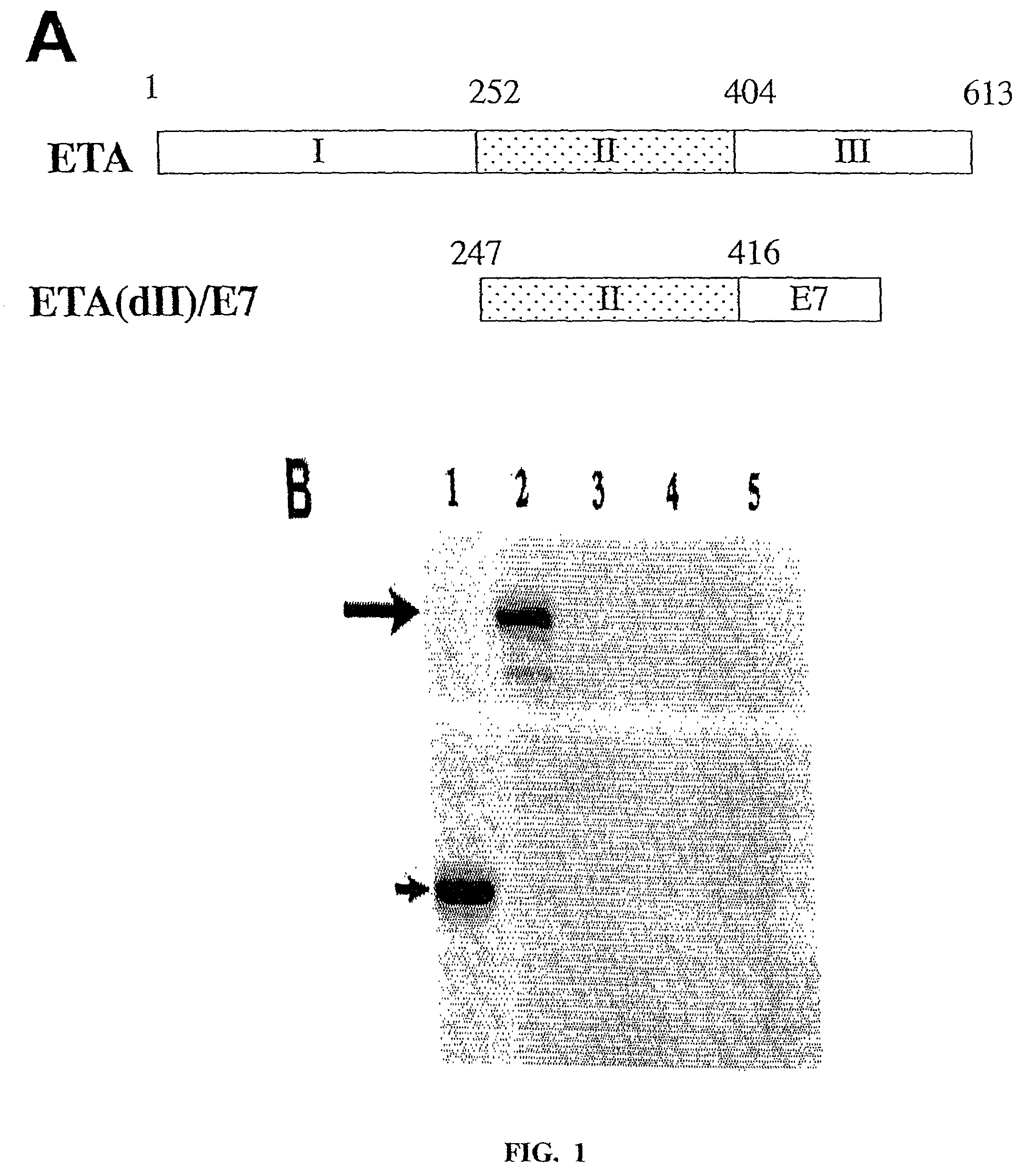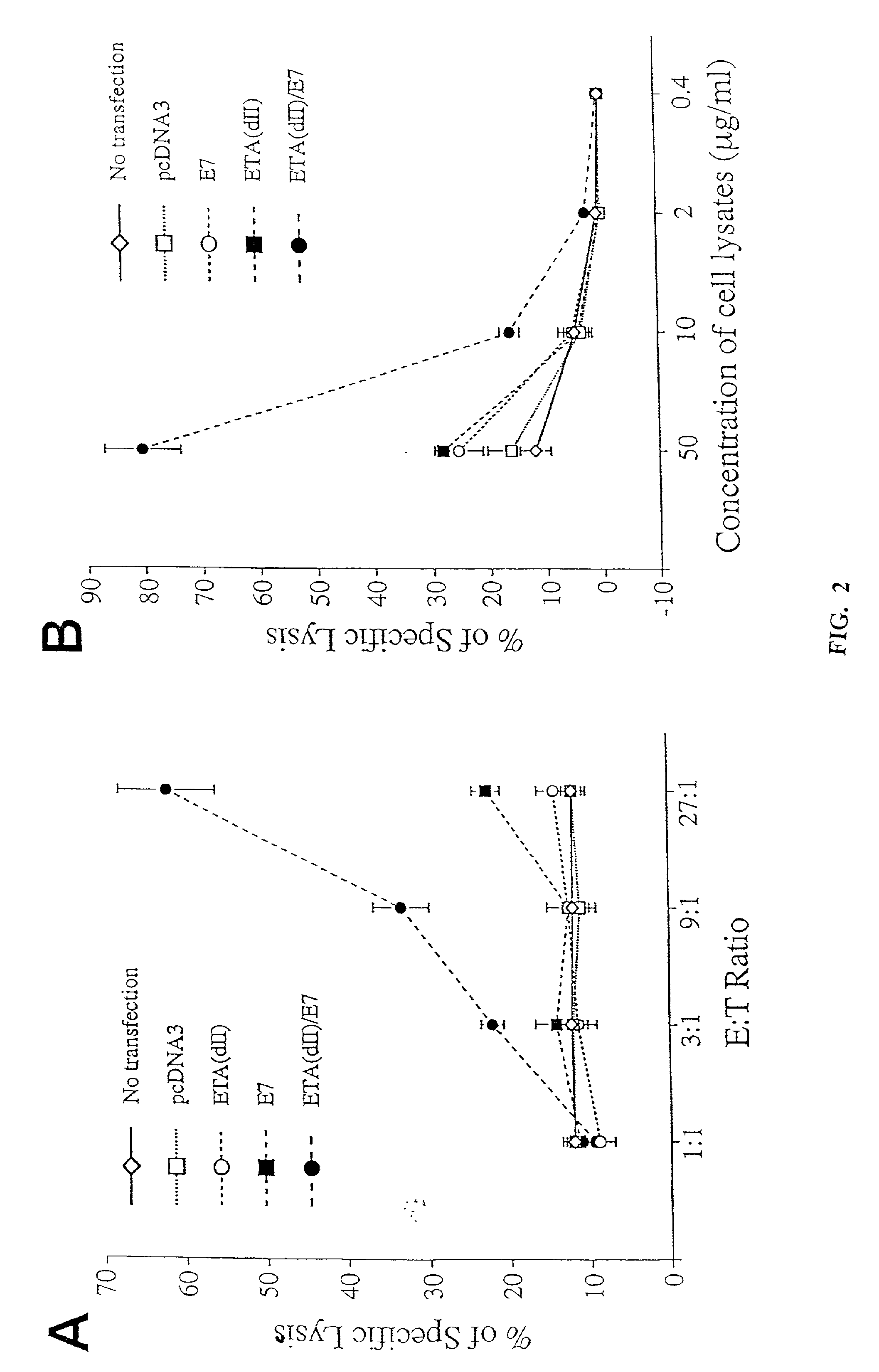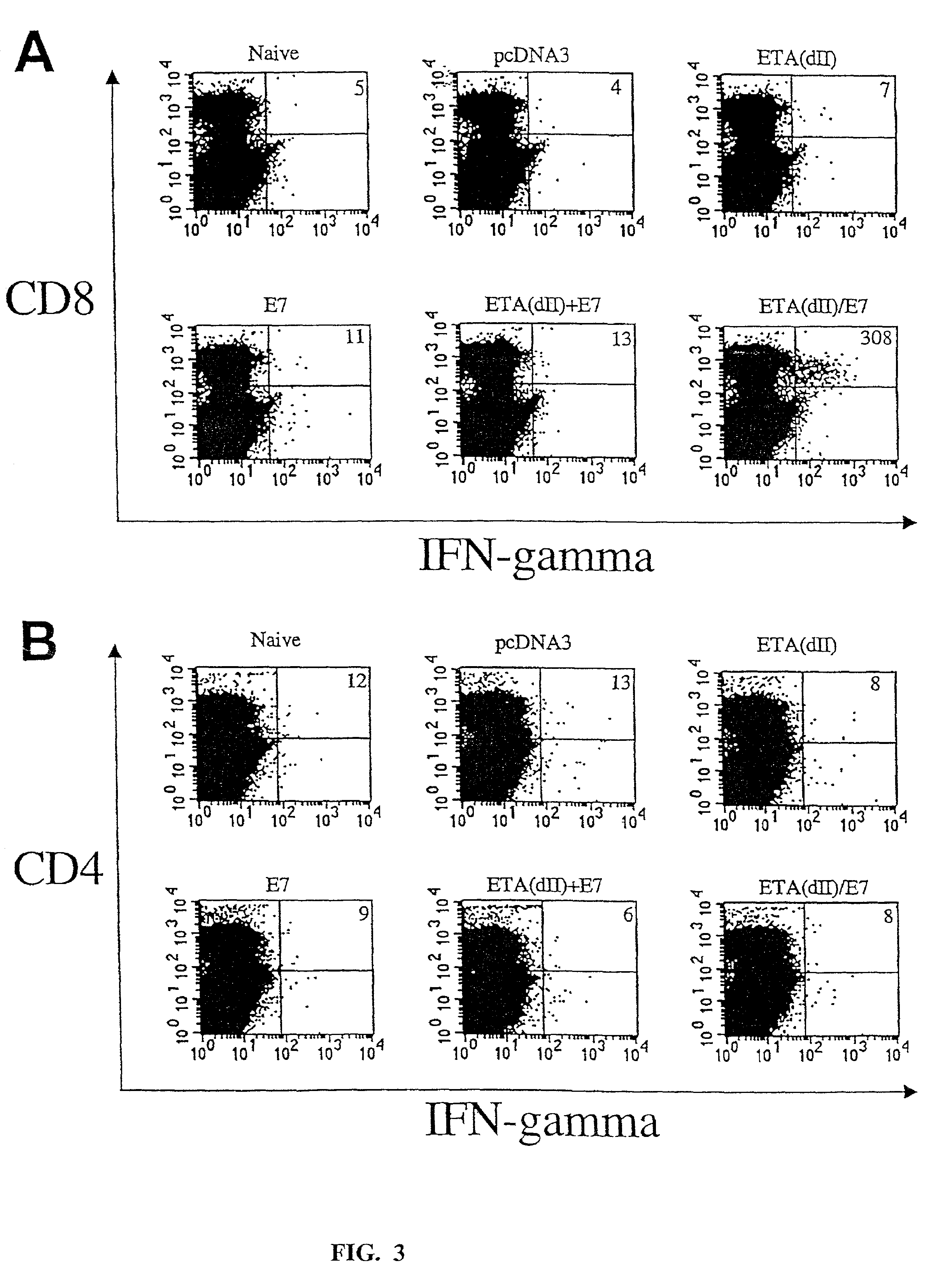Superior molecular vaccine linking the translocation domain of a bacterial toxin to an antigen
- Summary
- Abstract
- Description
- Claims
- Application Information
AI Technical Summary
Benefits of technology
Problems solved by technology
Method used
Image
Examples
example i
Materials and Methods
[0227](These examples incorporate by reference C-F Hung et al, Canc Res. 61:3698-3703 (2001))
Plasmid DNA Constructs and Preparation
[0228]The generation of pcDNA3-E7 has been described previously (5). For the generation of pcDNA3-ETA(dII), the pGW601 plasmid (Wozniak, D J et al, Proc Natl Acad Sci USA. 85: 8880-8884, 1988) (provided by Dr. Darrell R. Galloway at Ohio State University) was used as the template for amplification of ETA(dII). The DNA fragment containing ETA(dII) was generated using PCR with a set of primers: 5′-ccgggaattcatgcgcctgcactttcccgagggc-3′ (SEQ ID NO:10) and 5′-ccggaattcgttctgcgtgccgcgggtgctgaa-3′. (SEQ ID NO:11)
[0229]The amplified DNA fragment was then cloned into the EcoRI site of pcDNA3 (Invitrogen, Carlsbad, Calif.). For the generation of pcDNA3-ETA(dII) / E7, the DNA fragment containing ETA(dII) DNA was cloned into the EcoRI site of pcDNA3-E7. For the generation of pcDNA3-GFP, DNA fragment encoding the green fluorescent protein (GFP) was...
example ii
Generation and Characterization of the ETA(dII) / E7 DNA Vaccine
[0241]A schematic diagram showing the domains of full-length ETA and the construct of chimeric ETA(dII) / E7 is presented in FIG. 1A. Chimeric ETA(dII) / E7 was created by linking ETA(dII) (aa 247-416) to the E7 protein. We performed a Western blot analysis to characterize protein expression in E7 and ETA(dII) / E7 DNA-transfected cells (FIG. 1B). Analysis of lysates of E7 DNA-transfected 293 DbKb cells revealed a protein band with a size of approximately 15 kDa corresponding to E7 protein. Analysis of lysates of ETA(dII) / E7 DNA-transfected 293 DbKb cells generated a protein band with a size of approximately 35 kDa corresponding to ETA(dII) / E7 protein. Immunoblotting with an E7-specific antibody indicated that ETA(dII) / E7 DNA-transfected cells exhibited similar levels of E7 protein expression compared to E7 DNA-transfected cells (FIG. 1B).
example iii
Enhanced Presentation of E7 Through MHC Class I Pathway in Cells Transfected with ETA(dII) / E7 DNA
[0242]To test whether addition of the translocation domain of ETA to E7 can directly enhance MHC class I presentation of E7, we performed CTL assays to characterize the MHC class I presentation of E7 by 293 DbKb cells transfected with various DNA constructs. We chose 293 DbKb cells as target cells because they have a stable high transfection efficiency (up to 80%) and high expression of the C57BL / 6 MHC class I Db molecule. T cells of A Db-restricted E7-specific CD8+ T cell line (26) served as effector cells. As shown in FIG. 2A, 293 DbKb cells transfected with ETA(dII) / E7 DNA were killed at a significantly higher level at the 9:1 E:T ratio (33.3±3.3% versus 12.5±1.1%, p<0.001) and 27:1 (62.1±6.0% versus 22.6±3.0%, p<0.001) compared to cells transfected with wild-type E7 DNA. These results indicate that cells transfected with ETA(dII) / E7 DNA present E7 antigen through the MHC class I path...
PUM
| Property | Measurement | Unit |
|---|---|---|
| Length | aaaaa | aaaaa |
| Immunogenicity | aaaaa | aaaaa |
| Antigenicity | aaaaa | aaaaa |
Abstract
Description
Claims
Application Information
 Login to View More
Login to View More - R&D
- Intellectual Property
- Life Sciences
- Materials
- Tech Scout
- Unparalleled Data Quality
- Higher Quality Content
- 60% Fewer Hallucinations
Browse by: Latest US Patents, China's latest patents, Technical Efficacy Thesaurus, Application Domain, Technology Topic, Popular Technical Reports.
© 2025 PatSnap. All rights reserved.Legal|Privacy policy|Modern Slavery Act Transparency Statement|Sitemap|About US| Contact US: help@patsnap.com



